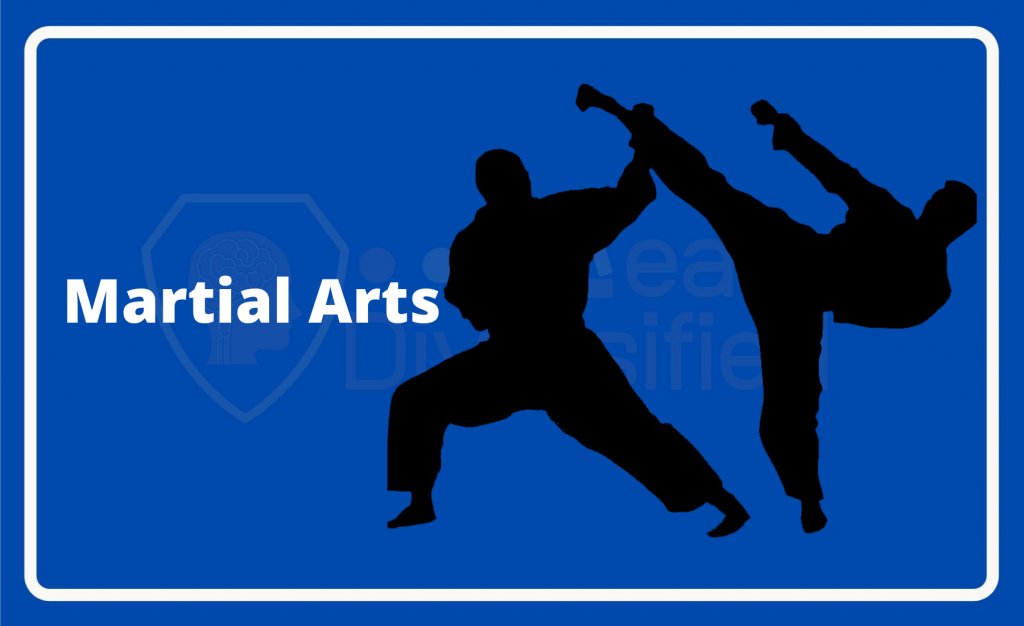Origin and evolution of Martial Arts
Early age
True roots of martial arts are undoubtedly inherited from the pre-human stage. Literature, figurative arts, archeological works like paintings and weaponry are the early age evidences of martial arts. Although martial arts has its origin from the East Asian cultures, the oldest form of martial arts can be found in 3400 BCE Egyptian paintings.
Even, the major Sanskrit Indian epic Mahabharatham shows us evidences of martial arts. Ancient Chinese yellow emperor was the first one to write lengthy descriptions of martial arts. He was also the emperor who introduced the earliest fighting systems 4000 years ago to this world.
Medieval period
Japanese developed and brought evolution to the early forms of martial arts during the development of Samurai warrior traditions. Samurais were highly proficient and they were masters of armed and unarmed combat skills. This led to the development of ancient martial arts.
Indian monk Bodhidharma whose nine years of meditation in Shaolin temple mastered him with dynamic forms of martial arts. He was the founder of the meditative philosophy of Zen Buddhism that evolved during medieval ages. Zen Buddhism and Bodhidharma laid the foundation for martial values like discipline, humility, respect and restraint.
Modern era
Europian groups are now actively working to reconstruct ancient martial arts. Well known modern martial arts are Boxing, Capoeira, Jujitsu, Kung fu, Judo, Karate, Taekwondo and many others. Asian martial arts became more influential through Hollywood martial movies. Bruce Lee, Jackie Chan and Jet Li are the famous modern age martial artists who built huge interest among many people.
Martial arts- a brief definition
The word “MARTIAL” is derived from the word mars which denotes the roman god of war. Typically martial arts means “arts of war” or “arts of mars”. To be more simple, martial arts can be defined as the codified traditions of training for combat.
M – Mountain (Strong as a mountain)
A – Actions (Actions speak stronger than words)
R – Respect (Martial arts teaches and earns you respect)
T – Traditional (Traditional art)
I – Integrity (Builds strong moral principles like integrity)
A – Attitude (Positive attitude)
L – Learn how not to loose (Teaches the winning strategy of life)
MARTIAL ARTS – Systemization of fighting techniques.
There are different forms of martial arts. I wish to help you know about three interesting martial arts.
Capoeira – The musical Martial Art
Capoeira, born in the 16th century is a Brazilian martial art that combines elements of dance, acrobatics and music. This was developed by western African slaves for self-defense. Though initially Capoeira was considered an illegal form of art, Mestre Bimba did not let it down. He taught Brazilians the cultural value of Capoeira and created the first Capoeira school in 1934.
It was only been practiced by the poor black Brazilians. Then, gradually countries like the US, Europe and the UK also started teaching Capoeira to their people. It almost takes seven years to learn and more than that to become a master. It is a long learning process that benefits you with good agility, flexibility, boosts your heart and improves your body-mind coordination.
Historically, Capoeiristas have blades strapped in their ankles or held between their toes perform somersaults and attack the opponent. The current practice is that two opponents face each other with the roda. Music is an integral part of this martial art. This art has gained many highly skilled female practitioners which were exclusively male dominant in the early years.
Kalaripayattu – India’s ancient Martial Art
Parashurama, the sixth avatar of Vishnu was the primary creator of Kalaripayattu. It was developed in Kerala. It was taught to Keralites to defend themselves against the Nagas who were the original inhabitants. The weapons they used are called Urumi (Chuttuval) to imitate the spinning motion of their enemies. When the British colonized India, the practice of kalaripayattu was banned. After the 1950’s the rise of Kalaripayattu was seen across many schools as a martial art.
It is one of the ancient Indian martial arts still existing and being practiced. Kalari which means “threshing floor or battlefield” is also considered as the father of modern Kung-Fu. Kalaripayattu masters not only practice martial art but also practice the way of making medicines (using herbals) to heal their wounds.
There are now teachers operating in countries all over the world. What’s more unique about Kalaripayattu is the movements that find inspiration in the power and strength of animals. Kalari benefits practitioners with better health, stronger body and good energy flow throughout the body.
Shaolin Kung-Fu – Martial Art that builds moral principles
China has a tradition of developing fighting styles. Bodhidharma went to the Shaolin temple in the 6th century and taught various exercises to the monks. These teachings were based on the movement of 18 animals. Those teachings have now literally developed into modern-day Kung-Fu. Number of legends has then arisen and has become a part of Kung-Fu culture.
Thus instead of being a display of aggression and force, the new form of Shaolin Kung-Fu turned to be a dynamic method. It is a powerful defense tool, but at the same time cultivates a peaceful mind. Shaolin Kung-Fu is based on the common Buddhist principles and the slow movements of Chinese martial art Chi-Kung. Gaining proficiency in the principles of mindfulness is the key to mastery in this art.
BRUCE LEE– THE GREATEST MARTIAL ARTIST
Bruce Lee was the most influential martial artist through his famous action movies. He was determined to be the greatest at everything he did. He was always trying the best way to express martial arts. We all can experience more realistic actions than fake moves that we see in martial arts movies today.
It is even accepted by all great fighters around the world that Bruce Lee can’t be replaced by anyone. He is even the reason for most guys becoming a part of martial arts. Bruce Lee is known as “the father of mixed martial arts”. Jeet Kune Do is his own martial art in which he has incorporated many styles of fighting.
BRUCE OF COURSE. NOBODY CAN BEAT HIM – MARTIAL ARTIST NORRIS
WORLDWIDE FIGHTING ICON – UFC PRESIDENT DANA WHITE
Jackie Chan and Jet Lee are the next ruling martial artists after Bruce Lee.
Benefits of learning martial arts
- Anxiety and Stress management
- Focus
- Conflict resolution
- Self-Discipline
- Self-Control
- Social Skills
- A cost-effective choice for overall health
- Practical Self-Defense
“Believe you can, Then you will”
For more interesting updates, click HOME

